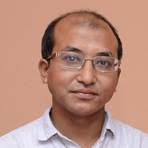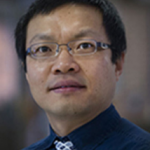Keynote speaker

College of Computing & Data Science (CCDS), Nanyang Technological University, Singapore
Title: Large Language Model-enhanced Reinforcement Learning for Low-Altitude Economy Networking
Bio:
Dusit Niyato is currently a President’s Chair Professor in the College of Computing & Data Science (CCDS), Nanyang Technological University, Singapore. Dusit’s research interests are in the areas of mobile generative AI, edge intelligence, quantum computing and networking, and incentive mechanism design. Currently, Dusit is serving as Editor-in-Chief of IEEE Transactions on Network Science and Engineering (impact factor 7.9). He is also the past Editor-in-Chief and current area editor of IEEE Communications Surveys and Tutorials (impact factor 46.7), also the area editor of IEEE Transactions on Vehicular Technology, topical editor of IEEE Internet of Things Journal, lead series editor of IEEE Communications Magazine, topic editor of IEEE Transactions on Services Computing. He was named the 2017-2024 highly cited researcher in computer science. He is a Fellow of IEEE and a Fellow of IET.
Abstract
Low-Altitude Economic Networking (LAENet) aims to support diverse flying applications below 1,000 meters by deploying various aerial vehicles for flexible and cost-effective aerial networking. However, complex decision-making, resource constraints, and environmental uncertainty pose significant challenges to the development of the LAENet. Reinforcement learning (RL) offers a potential solution in response to these challenges but has limitations in generalization, reward design, and model stability. The emergence of large language models (LLMs) offers new opportunities for RL to mitigate these limitations. We first present a tutorial about integrating LLMs into RL by using the capacities of generation, contextual understanding, and structured reasoning of LLMs. We then propose an LLM-enhanced RL framework for the LAENet in terms of serving the LLM as information processor, reward designer, decision-maker, and generator. Moreover, we conduct a case study by using LLMs to design a reward function to improve the learning performance of RL in the LAENet. Finally, we provide a conclusion and discuss future work.
Title: Optical wireless communication: from underwater to space connectivity
Bio:
Dr Sujan Rajbhandari (Senior Member, IEEE) is an internationally recognized expert in optical wireless communication with 15+ years of experience in academia and industry. Currently, he is a Senior Lecturer at the University of Strathclyde, UK. His expertise spans optical wireless communication, advanced signal processing, and the application of machine learning/artificial intelligence to communication systems. He has authored over 300 scholarly articles with citations of over 9900 and a notable book, “Optical Wireless Communications: System and Channel Modelling with MATLAB®”.
Abstract
As communication networks expand into non-terrestrial domains, traditional radio frequency (RF) technologies are increasingly becoming bottlenecks in meeting the growing demands for data and connectivity. As a result, future generations of wireless networks are expected to seamlessly integrate multiple bands of spectrum to address the unprecedented demand across underwater, terrestrial, and space environments.
Achieving 3D connectivity requires the convergence of conventional wireless systems with new and emerging technologies tailored to these diverse and challenging applications. Optical wireless communication (OWC) has emerged as a highly promising technology that complements existing RF systems to extend network coverage. In this talk, we will explore how recent advancements in OWC are transforming communication capabilities from underwater, terrestrial and space. The talk will also highlight the key challenges faced in different environments, present emerging solutions, and discuss future perspectives.
Title: Advances in Machine Learning for Automated Microsystems Design
Bio:
Dr. Lihong Zhang (Senior Member, IEEE) is currently a Full Professor with the Department of Electrical and Computer Engineering, Faculty of Engineering and Applied Science, Memorial University of Newfoundland, St. John’s, NL, Canada. He received the Ph.D. degree in electrical engineering from the Otto-von-Guericke University of Magdeburg, Magdeburg, Germany, in 2003. He was a Postdoctoral Research Associate with Concordia University, Montreal, QC, Canada; Dalhousie University, Halifax, NS, Canada; and the University of Washington, Seattle, WA, USA. His current research interests include very large-scale integration computer-aided design, mixed-signal integrated system/circuit design, microelectromechanical systems design and design automation, wireless sensor networks, microfluidics and biosensors, and microprocessor-based instrumentation for ocean and biomedical applications.
Abstract
Low-Altitude Economic Networking (LAENet) aims to support diverse flying applications below 1,000 meters by deploying various aerial vehicles for flexible and cost-effective aerial networking. However, complex decision-making, resource constraints, and environmental uncertainty pose significant challenges to the development of the LAENet. Reinforcement learning (RL) offers a potential solution in response to these challenges but has limitations in generalization, reward design, and model stability. The emergence of large language models (LLMs) offers new opportunities for RL to mitigate these limitations. We first present a tutorial about integrating LLMs into RL by using the capacities of generation, contextual understanding, and structured reasoning of LLMs. We then propose an LLM-enhanced RL framework for the LAENet in terms of serving the LLM as information processor, reward designer, decision-maker, and generator. Moreover, we conduct a case study by using LLMs to design a reward function to improve the learning performance of RL in the LAENet. Finally, we provide a conclusion and discuss future work.




